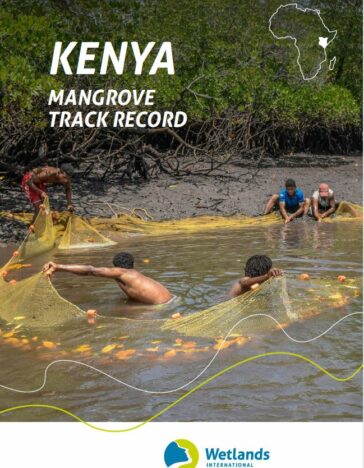
Kenya Mangrove Track Record
Wetlands International works to safeguard and restore one million hectares of mangroves across 10 African countries, preserving biodiversity while benefiting approximately two million people.
In Kenya, Wetlands International started its first large scale coastal programme in 2021, focusing its activities on two locations which contain 66% of the country’s total mangrove area, Tana Delta and Lamu. Both are rich in biodiversity and natural resources, and their mangrove forests support thousands of local livelihoods – but a range of pressures from human activity as well as natural changes caused by the 1997-98 El Nino phenomenon threaten the health of these vital ecosystems.
We’re working to halt and reverse degradation and unsustainable exploitation, collaborating closely with local and national stakeholders on a wide range of mangrove conservation and restoration
activities, building social and ecological resilience in our target areas. As we create partnerships, raise awareness and develop effective strategic approaches to the challenges we face, we’re
beginning to scale up our impact across Kenya and the wider region.
Our impacts in Kenya in a nutshell
- Enhanced the conservation status of over 38,000 hectares of mangroves in Lamu and Tana Delta through participatory management planning, patrolling, training, awareness raising, and supporting alternative livelihoods.
- Restored 116 hectares of mangroves directly and indirectly using the Community-Based Ecological Mangrove Restoration (CBEMR) approach.
- Supported more than 7,300 people by creating sustainable alternative livelihoods, reducing dependence on mangrove resources for firewood, fishing, and construction.
- Installed improved cook stoves in 104 households and a school, benefiting 3,000 people and reducing mangrove wood consumption, with plans for upscaling through Lamu County Government.
- Initiated a nature-based ecotourism project on Pate Island, which includes a mangrove boardwalk, bird-watching platform, and visitor centre, boosting local livelihoods and promoting conservation.
- Built strong relationships with key national and local stakeholders, such as the Kenya Forest Service and County Government of Lamu, to ensure coordinated mangrove management.
- Contributed to national and regional policies and sustainable mangrove management, by sharing knowledge, mangrove monitoring data (Global Mangrove Watch), and best practices for mangrove restoration and conservation.

